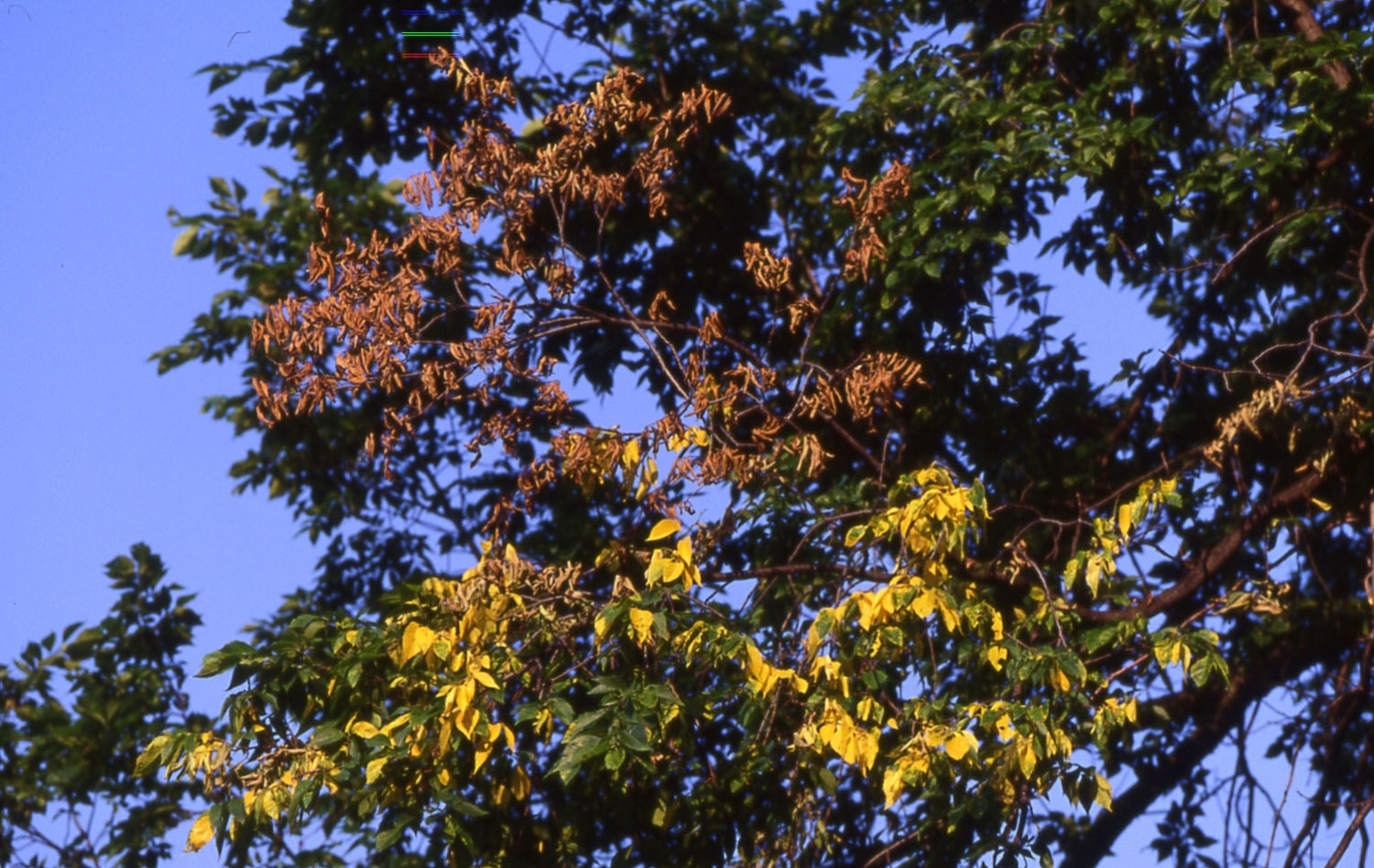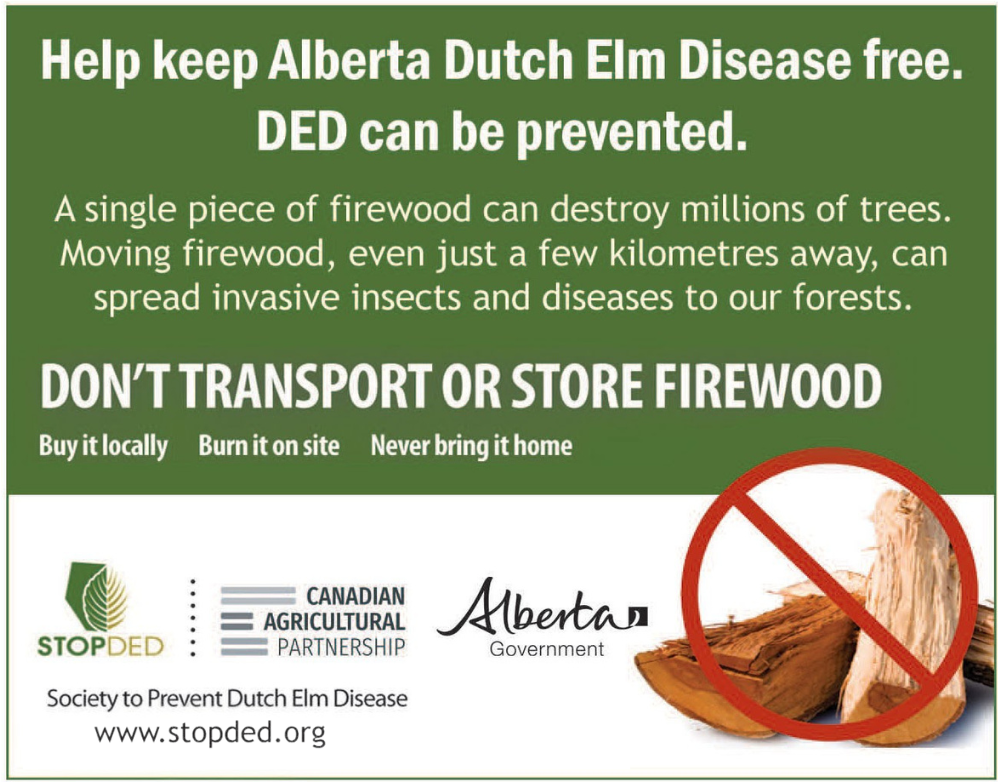Dutch Elm Disease

Since Dutch Elm Disease (DED) was first introduced to North America from Europe in 1930, it has destroyed millions of elm trees. Alberta is one of the last geographic areas in North America to be free of DED – let’s keep it that way.
Signs of Dutch Elm Disease
Dutch Elm Disease is caused by a fungus (Ophiostoma ulmi or Ophiostoma nova) that spreads from one elm tree to another by elm bark beetles. Signs of the disease vary depending on the season:
- In the spring, trees will have a few branches with smaller leaves than the rest, or no leaves at all.
- In the early summer, green leaves on some branches will wilt or droop. Some leaves will be shriveled and brown, and they’ll cling to the branch.
- In the late summer, leaves may be yellow and drooping, a distinct characteristic that is known as flagging. Yellow leaves will also drop prematurely, and succulent branches on the trunk will wilt and turn brown.
What you can do
Homeowners in Calgary should be aware of Dutch Elm Disease and take the following steps to help prevent this disease from ravaging our elm trees:
- Adhere to the Provincial elm pruning ban between April 1 and September 30. Pruning should be done when beetles are not active, between October and March. All tools used on diseased trees should be sterilized between trees when pruning. To sterilize your tools, use methyl hydrate, a 25% solution of bleach and water, or a 70% concentrate of rubbing alcohol.
- Elm materials should be immediately disposed of and buried at City landfills – stored elm firewood is an ideal breeding ground for elm bark beetles. Storing elm is prohibited year round, unless the bark is removed or the wood has been treated by kiln drying.
- All trees should be watered every two to three weeks from April to mid-August, then again in the fall before freezing. Trees need much more water than lawns do.
Keeping Alberta free of Dutch Elm Disease
If you see a tree showing signs or symptoms of Dutch Elm Disease please contact 311.
The province has no native elm trees but; many thousands of elms worth millions of dollars have been planted in Alberta cities, towns and rural landscapes because of their stately beauty, rapid growth, good regenerative capacity, extensive life-span, and ability to survive extreme climate conditions. The City takes several steps to prevent introduction of Dutch elm disease to Alberta, including promoting elm health, promoting awareness of the disease, monitoring elm beetle populations and testing trees for DED symptoms. Sticky panel traps with lures are placed at sites throughout Calgary and checked throughout the summer to monitor beetle populations.
The Alberta Society to Prevent Dutch Elm Disease (STOPDED), in cooperation with Alberta Agriculture, Food and Rural Development, promotes public awareness of DED through media events and trade shows. DED Awareness Week is recognized annually throughout the province from June 24-30.


